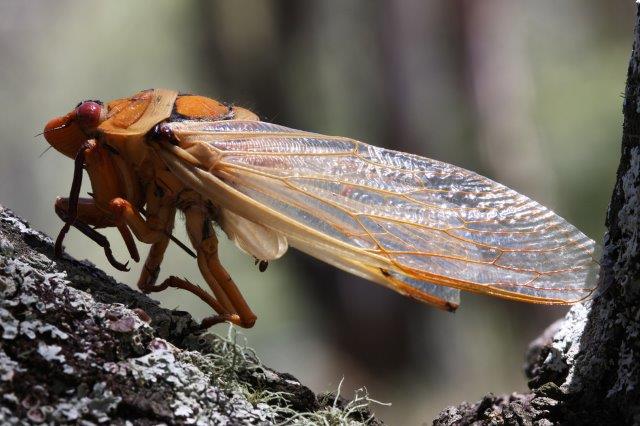FOR IMMEDIATE RELEASE
ACS News Service Weekly PressPac: August 09, 2017
How cicadas manage to 'wing it'
"Solid-State NMR Study of the Cicada Wing”
The Journal of Physical Chemistry B
Unlike locusts and many other flying insects, cicadas don’t soar through the air with the greatest of ease. Now in a study appearing the ACS’ The Journal of Physical Chemistry B, scientists report that certain chemical components in the insect’s wings could explain why.
Although cicadas live most of their lives underground, billions of them eventually emerge on the surface in late spring, either annually or periodically in 13- to 17-year cycles. During their brief six-week lifecycle above ground, adult cicadas cling to nearby trees, generate shrill mating calls, reproduce and die. It was the sight of hundreds of dead cicadas on their household deck that inspired Terry Gullion and his son, John, a high school student, to investigate the exact chemical composition of cicada wings.
Using solid-state nuclear magnetic resonance spectroscopy, the team found that the veins and membranes of cicada wings were composed of different proteins. They also detected differing ratios of protein to chitin — a strong, fibrous substance — in these structures. Driven by their curiosity, the Gullions then compared their cicada wing chemical profile to that found in locust wings reported in the literature. In that earlier study, scientists using a different method detected virtually no chitin in the locust wing membrane. The researchers say that this difference in chitin could help explain why cicada wings are relatively heavy compared to a locust’s, and why cicadas can only fly short distances.
The authors acknowledge funding from the National Science Foundation.
Note: ACS does not conduct research, but publishes and publicizes peer-reviewed scientific studies.


